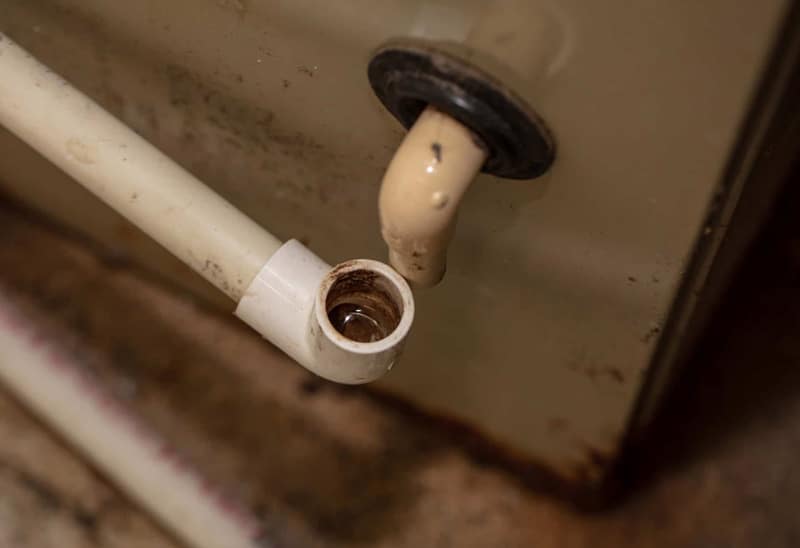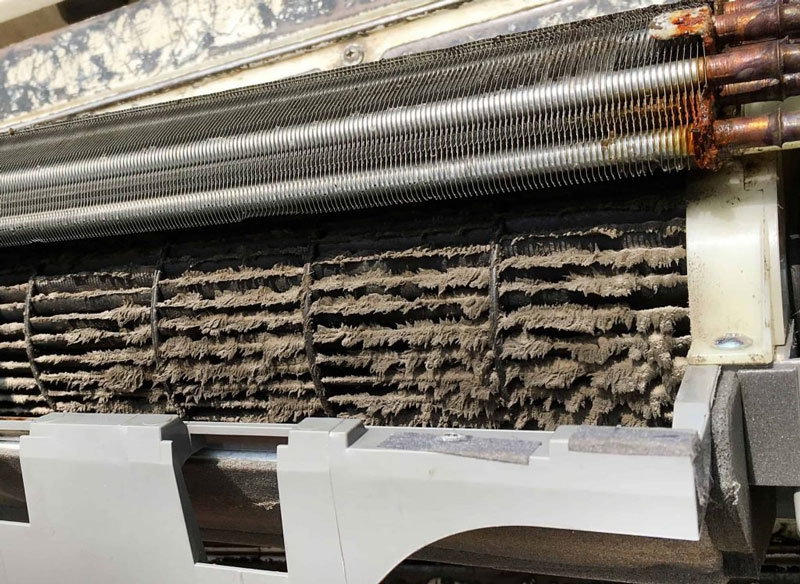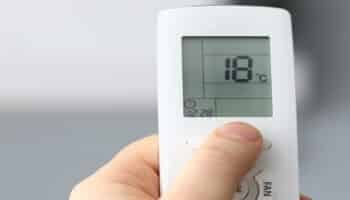We've independently reviewed this article to make sure it's as accurate as we can make it.
To find out more about our article creation and review process, check out our editorial guidelines.
Has something made you suspicious about whether or not your air conditioner is properly draining water? Like suspicious water spots?
Depending on where you live you, may have your air conditioner in the attic. if you’re seeing water damage on the ceiling there’s a good chance it’s due to a backup in your air conditioner’s condensate drain line.
Your air conditioner can stop draining due to a clogged drainpipe. Overtime, dirt, debris, and algae can build up and block the flow of water through the drainage system. Since the water can no longer flow out, it will back up into your system and lead to a leaking air conditioner.
Keep reading, as I will explain the steps you can take to fix the issue, and how to avoid it happening again.
First here’s is a list of reasons why your air conditioner may have stopped draining water.
Why Your Air Conditioner Produces Water
Before we get into what to do with all that water, let me explain where it’s coming from in the first place.
The process of cooling your air happens when your air conditioner pulls warm air from your home through the air handler and over an evaporator coil. This process creates condensation as the system removes moisture from the air.
Condensation is then collected into a drain pan that is connected to the condensate drain line—a line that typically drains outside your home. Some, however, are directly connected to your plumbing.
Things start to go wrong when there’s a problem with either the pan or the line.Plus a few other reasons.
Why Your Air Conditioner Isn’t Draining Water
I mentioned above that one of the reasons could be a buildup of dirt or algae within the drain line itself. However, there are other reasons.
It’s important to understand the cause behind why your air conditioner no longer drains properly. Water damage to your home isn’t fun, but if you catch it soon enough it’s not an expensive issue. If you ignore the root cause, overtime the problem will just get worse and eventually become an expensive issue.
Disconnected Drain Line
Before checking anything else, make sure the drain line itself has not somehow become disconnected. Overtime things maybe come loose due to the constant vibration of your system, or perhaps it was improperly installed.
Tighten up any connections that may be loose and see if this resolves your issue.

Rusty Drain Pan
How old is your air conditioner? If it’s of any significant age there’s a good chance that your drain pan is damaged, perhaps due to rust. A damaged drain pan can halt the flow of water to the drain line.
Check to see if your drain pan needs to be replaced.
If you want to get any replacement part – or see how much one would cost – click to enter your model number in the search bar below. Our partners at AppliancePartsPros stock almost every part with free guides on how to install them.

Faulty Condensate Pump
This pump pushes the moisture collected from condensation through your drain line. If you have the indoor unit of your air conditioner in your basement there is a strong possibility that you have a condensate pump as well. If the pump is faulty it could cause an interruptionin your system’s drainage.
Frozen Evaporator Coil
Dirty Evaporator Coil
Just as an ice buildup on the coil can cause a leak, so can a buildup of dirt.
In either case of a frozen or dirty evaporator coil, regular system maintenance should stop this from happening.

Should Your Air Conditioner Drain All Season?
Another thing to consider is that air conditioners don’t necessarily drain the same amount throughout the entire season.
Here are some factors that can impact the amount of water your air conditioner drains.
- Indoor humidity levels
- Outdoor humidity levels
- Fan speed (slower fan speed = more moisture removal)
- The condition of your air conditioner
- The condition of your air filter
If you live in a humid climate your air conditioner could drain as much as 20 gallons of water per day. However, for those who live in a drier, arid climate it could be as low as 5 gallons per day.
How To Fix An Air Conditioner That Has Stopped Draining Water
So now that you’re fully versed on why your air conditioner is creating water and possible reasons why it may not be draining properly, let’s move on.
The steps you should take to deal with an air conditioner that isn’t draining.
What You’ll Need
- A shop vac (optional)
- Thin wire brush
- Rags
- Duct tape
- Rubber gloves
- Bleach
- A bucket
- Water
1. Turn off your air conditioner.
Whenever anything is going wrong with your HVAC, the first thing you should do is shut it down. You can do this at either the breaker or the thermostat.
2. Find your drain pan.
Depending on your unit type, your air conditioner will have one or two drain pans. If the AC has a drain line (i.e. an outside unit, not a portable air conditioner), then the drain pan you can see is the ‘secondary pan’. If there’s any water in that, you’ve likely got a drainage issue. It’s a backup for if the primary pan – which is connected to the drain line – overflows.
3. Check the pan for water.
If there is water in the drain pan, then may you have a clogged line. If there’s no water in the pan but you do have a leak somewhere, then you may have a disconnected drain line, in which case you want to tighten or reconnect your line.
For any water that has collected in the pan, you can use a shop vac or any other means to clean out the water.
4. Clean and Clear The Drain Pipe.
After you’ve cleared away the water that has collected, it’s now time to clean out the drain pipe. Follow the steps below.
- Ensure that the pipe is connected to your drain pan.
- Head outside and find the exterior drainpipe and put a bucket or container under it.
- Use a wire brush or rolled-up cloth to remove any debris or buildup of slime that you can reach.
- Look for the access pointon the drain line. This is often a T-shaped piece of PVC.
- Make a mixture of about a gallon of water and a cup of bleach and pour that into the drain pipe. Let it sit for about 30 minutes.
- After 30 minutes check to see if there’s any water in the bucket or container that you placed under the drain pipe. If so, water is flowing again.
- At this point you can also test to make sure things are OK by pouring some water through the pipe and making sure it flushes out immediately.
If you would rather see a video tutorial of the steps please refer to the YouTube video below.
Conclusion
As mentioned above, multiple things could cause your air conditioner to begin leaking.
They include:
- A clogged drain line or trap
- Disconnected drain line
- Faulty condensate pump
- Frozen evaporator coil
- Dirty evaporator coil
So if you discover a leak it’s not just a matter of following the steps above to remove the water. You also want to discover the cause. Once you fix that problem and regularly maintain your condensate line, air conditioners that don’t drain should be a thing of your past.
Thanks for reading. I hope you found an answer to your situation. While you’re here, why not check out the related posts below.







